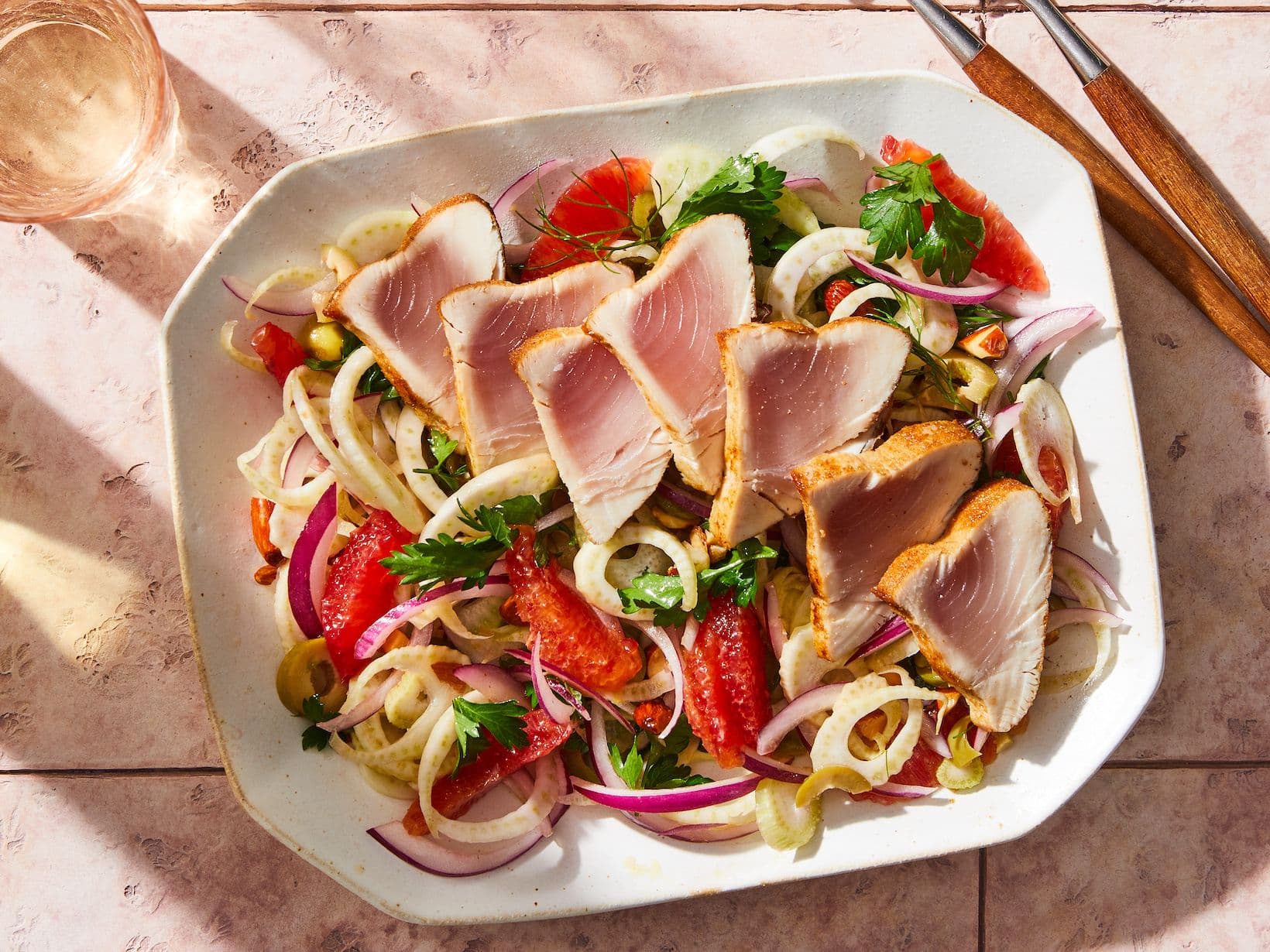Build a Better Salad
Salads are often given short shrift, thrown together haphazardly using whatever is on hand — or more likely, produce that’s one day shy of the compost bucket. Maybe you eat them as a means of getting more fiber in your diet or as a calorie-reducing tactic. Either way seems compulsory and joyless.
I don’t hear a lot of people getting suuuuper excited about eating a salad. I do hear a lot of “I don’t really like salad,” or “It doesn’t fill me up.”
This just tells me that those folks don’t have the basic tools to make a really enjoyable salad. Even some bona fide foodies I know struggle with finding the right combinations. This is where a good mix-and-match matrix and some simple principles come in handy.
While there are no hard-and-fast rules about what makes a perfect salad, the idea is to find the flavors, textures, and nutrients that you enjoy. And using a wide variety of flavors and textures makes a more dynamic, interesting salad.
Working our way through the chart below from the greens — which account volume-wise for the most in your bowl — to crunchy toppings, which are used more sparingly, these suggestions will help you on your way to building a better, more filling, and ultimately more satisfying salad.
- For greens, I’ve broken it down into crunchy and juicy, bitter and peppery, and delicate. You can use one or more of these as the base of your salad. Your salad will be more interesting if you combine greens with different attributes.
- Next, we have veggies. Raw vegetables add terrific crunch and give you little bursts of flavor with each bite, keeping your mouth from getting bored. Cooked vegetables, like winter squash or beets, add sweetness and softness that is a welcome change in texture. Use thinly sliced red onion or shallot sparingly for a bit of bite, and make sure they’re fresh.
- Adding protein to a salad makes it a complete meal, helping you feel more full. It’s a great way to use leftover seafood or chicken from last night’s dinner. Canned beans, grains, and legumes are excellent vegetarian options. Feel free to combine several from this category. For side salads or first courses, however, skip the protein, to keep things lighter.
- Fruit, like vegetables, are lovely in salads. Fresh fruit — grapes, figs, pears, or berries — add juicy sweetness, which is a nice counterbalance to tart dressings. Dried fruit, like cranberries or dates, and cooked fruit, like grilled peaches or poached pears, are more subtle than fresh but equally delicious. Use one or two at the most, otherwise sweetness can dominate.
- Cheeses should be used more sparingly in salads than other proteins, as they contain more saturated fats and can have overpowering flavors. Crumbled soft cheeses like feta, gorgonzola, or goat cheese, or shaved hard cheeses like parmesan, manchego, or aged gouda can be added to salads with or without fruit. But the combination of salty, rich cheese and juicy, sweet fruit in a salad is next-level delicious.
- For a final flourish, add some crunchy toppers. These can be toasted or candied nuts, croutons (homemade always has the best flavor), or fried bits like bacon, crispy shallots, or my favorite: crispy fried cheese (fricos).
- Last but not least is the dressing. All your hard work can be undone with the shake and pour of a bad commercial bottled dressing, many of which are loaded with sodium, sugar, additives, artificial flavorings, unhealthy fats, and empty calories. Making your own dressing sounds complicated, but it’s really not much more than vinegar, oil, and seasonings. Check out the grid for a few simple recipes.
I’ve also included three salad combinations in the chart — a side salad, a hearty lunch salad, and a main course dinner salad — to inspire you.
As always, I’d love to hear from you. Share your favorite salad combinations with me at AskGrace@sitkaseafoodmarket.com
Stay wild and start building!
-Grace




